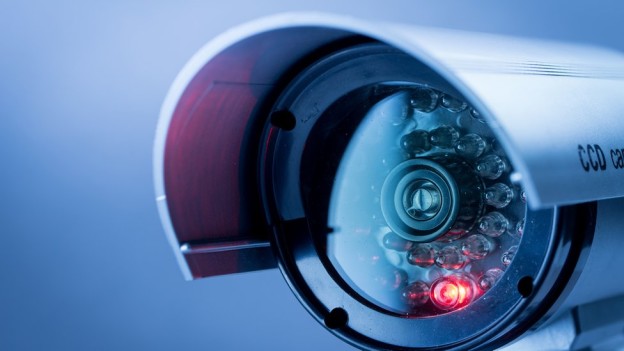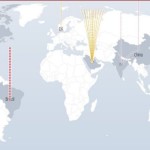China’s Ministry of Justice has threatened legal action against those blaming Chinese firms for botnets.
More here:
Beijing threatens legal action over webcam claims


China’s Ministry of Justice has threatened legal action against those blaming Chinese firms for botnets.
More here:
Beijing threatens legal action over webcam claims
A majority or 80% of DNSSEC-secured domains could be used to amplify distributed denial of service (DDoS) attacks, at an average factor of 28.9 times, according to a recent report by Neustar which studied nearly 1,350 domains with DNSSEC deployed. The report points out that the domains had not properly deployed DNSSEC-signing of their domains, leaving them vulnerable to DDoS attacks. “Neustar has correctly pointed out the additional amplification factor related to misconfigured DNSSEC vs. legacy DNS, where the inclusion of the digital signature allows for a somewhat higher than a normal DNS amplification attack,” says Corero Network Security COO Dave Larson, in a statement. “However, the point that must be stressed related to this or any other DDoS amplification vectors is that operators of any network – whether they include DNS service or not – should have their networks configured not to respond to spoofed IP requests. In addition, DNS operators should configure their DNS servers not to respond to ‘ANY’ requests in order to squelch the opportunity for the server to be leveraged for malicious use.” Larson adds that on the flip side, the impact to the receiving end of the attack can be especially problematic. The fragmented and amplified attack technique, utilizing DNS or DNSSEC can cause outages, downtime and potential security implications for Internet Service Providers if they are relying on out-of-band DDoS protection mechanisms. Furthermore, organizations relying on traditional IT and security infrastructure such as firewalls and load balancing equipment are no match for these attacks. “A comprehensive in-line and automatic mitigation method for removing DDoS attacks is the recommended approach for dealing with all types of DDoS attacks – DNS and beyond,” noted Larson. Source: http://www.networksasia.net/article/attackers-could-abuse-dnssec-secured-domains-ddos-attacks-report.1471485281
Visit link:
Attackers could abuse DNSSEC-secured domains for DDoS attacks: report

 Experts believe that the electronic assault on the census site was a DDoS attack – a kind of electronic army that attacks an enemy’s website on every flank using millions of computers as soldiers. About 2000 of these attacks occur every day across the world, said DigitalAttackMap, a website that monitors such attacks. Only days ago, this type of attack shut down US Olympic swimming Michael Phelps’ commercial website, SCMagazine , which specialises in IT security, said. It said the attack happened fresh after Phelps’ gold medal-winning performance in the men’s 4×100 metre freestyle relay at the Rio Games. One hacking expert told Time magazine that any celebrity or high-profile site should expect these attacks. “Each celebrity on our target list will be either hacked or DDoSed,” a representative of hacking group New World Hackers said. Xbox, US Republican presidential candidate Donald Trump and the BBC have been among New World Hackers’ recent targets. DigitalAttackMap, a joint venture between Google Ideas and network security firm Arbor Networks, said these attacks had hit online gaming sites, newspapers and banks; Greek banks were crippled this year. Yet its site doesn’t show a DDoS attack on the ABS census site on Tuesday, bolstering claims by some that the attack didn’t take place. The DigitalAttackMap tracks DDoS attacks on a daily basis. The red flare over Brazil shows a serious DDoS attack. Photo: DigitalAttackMap.com The Australian Bureau of Statistics said its census site was hit four times by denial of service (DoS) attacks. A DoS is a broad term for attacks that attempt to crash an online system so that users cannot access it. Some IT and cybersecurity professionals speculated that a DDoS (Distributed Denial of Service) attack was to blame. A DDoS is a type of DoS attack in which hackers attempt to crash a system by flooding it with bots – or Trojan – accounts. DigitalAttackMap said attackers cripple websites, such as the ABS’ census site, by building networks of infected computers, known as botnets, by spreading malicious software through emails, websites and social media. Once infected, these machines can be controlled remotely, without their owners’ knowledge, and used like an army to launch an attack against any target. Some botnets are millions of machines strong. DigitalAttackMap says these botnets can generate huge floods of traffic to overwhelm a target. “These floods can be generated in multiple ways, such as sending more connection requests than a server can handle, or having computers send the victim huge amounts of random data to use up the target’s bandwidth. Some attacks are so big they can max out a country’s international cable capacity.” Adding to many people’s fears about the security of the census website before the attack, the information gained from these sites during an attack is sold on online marketplaces that specialise in information gained from these DDoS attacks, DigitalAttackMap said. “Using these underground markets, anyone can pay a nominal fee to silence websites they disagree with or disrupt an organisation’s online operations. A week-long DDoS attack, capable of taking a small organisation offline, can cost as little as $150,” the website said. Source: http://www.smh.com.au/technology/technology-news/what-are-the-dos-and-ddos-attacks-that-brought-down-the-census-20160809-gqowwp.html
Experts believe that the electronic assault on the census site was a DDoS attack – a kind of electronic army that attacks an enemy’s website on every flank using millions of computers as soldiers. About 2000 of these attacks occur every day across the world, said DigitalAttackMap, a website that monitors such attacks. Only days ago, this type of attack shut down US Olympic swimming Michael Phelps’ commercial website, SCMagazine , which specialises in IT security, said. It said the attack happened fresh after Phelps’ gold medal-winning performance in the men’s 4×100 metre freestyle relay at the Rio Games. One hacking expert told Time magazine that any celebrity or high-profile site should expect these attacks. “Each celebrity on our target list will be either hacked or DDoSed,” a representative of hacking group New World Hackers said. Xbox, US Republican presidential candidate Donald Trump and the BBC have been among New World Hackers’ recent targets. DigitalAttackMap, a joint venture between Google Ideas and network security firm Arbor Networks, said these attacks had hit online gaming sites, newspapers and banks; Greek banks were crippled this year. Yet its site doesn’t show a DDoS attack on the ABS census site on Tuesday, bolstering claims by some that the attack didn’t take place. The DigitalAttackMap tracks DDoS attacks on a daily basis. The red flare over Brazil shows a serious DDoS attack. Photo: DigitalAttackMap.com The Australian Bureau of Statistics said its census site was hit four times by denial of service (DoS) attacks. A DoS is a broad term for attacks that attempt to crash an online system so that users cannot access it. Some IT and cybersecurity professionals speculated that a DDoS (Distributed Denial of Service) attack was to blame. A DDoS is a type of DoS attack in which hackers attempt to crash a system by flooding it with bots – or Trojan – accounts. DigitalAttackMap said attackers cripple websites, such as the ABS’ census site, by building networks of infected computers, known as botnets, by spreading malicious software through emails, websites and social media. Once infected, these machines can be controlled remotely, without their owners’ knowledge, and used like an army to launch an attack against any target. Some botnets are millions of machines strong. DigitalAttackMap says these botnets can generate huge floods of traffic to overwhelm a target. “These floods can be generated in multiple ways, such as sending more connection requests than a server can handle, or having computers send the victim huge amounts of random data to use up the target’s bandwidth. Some attacks are so big they can max out a country’s international cable capacity.” Adding to many people’s fears about the security of the census website before the attack, the information gained from these sites during an attack is sold on online marketplaces that specialise in information gained from these DDoS attacks, DigitalAttackMap said. “Using these underground markets, anyone can pay a nominal fee to silence websites they disagree with or disrupt an organisation’s online operations. A week-long DDoS attack, capable of taking a small organisation offline, can cost as little as $150,” the website said. Source: http://www.smh.com.au/technology/technology-news/what-are-the-dos-and-ddos-attacks-that-brought-down-the-census-20160809-gqowwp.html
Read More:
What are the DoS and DDoS attacks that brought down the census?
The latest security update (XSA-145 through 153) for the popular Xen virtualization software fixes nine issues. Eight of them can lead to Denial of Service, but the ninth is much more serious than…
Read More:
Xen Project plugs critical host hijacking flaw, patch ASAP
China bore the brunt of DDoS reflection attacks last month, with 61 percent of the top attack destinations observed hitting Chinese-based systems, according to Nexusguard. Of the 21,845 attack events …
More here:
China is the top target for DDoS reflection attacks
The Simda botnet, believed to have infected more than 770,000 computers worldwide, has been targeted in a global operation. In a series of simultaneous actions around the world, on Thursday 9 April…
Excerpt from:
Simda botnet taken down in global operation
A new multi-purpose Linux Trojan that opens a backdoor on the target machine and can make it participate in DDoS attacks has been discovered and analyzed by Dr. Web researchers, who believe that the C…
View the original here:
New multi-purpose backdoor targets Linux servers
Here's an overview of some of last week's most interesting news and articles: LizardSquad's DDoS service is powered by hacked home routers The preponderance of routers represented in the botnet …
More:
Week in review: Google discloses Windows flaw, French sites under attack, Android users in danger
When the Sony Playstation and Microsoft Xbox Live gaming networks went down over Christmas and were kept offline for several days afterwards, the hacker collective that calls themselves LizardSquad to…
View the original here:
LizardSquad's DDoS service is powered by hacked home routers
Akamai has observed the use of a new reflection and amplification DDoS attack that deliberately misuses communications protocols that come enabled on millions of home and office devices, including rou…
Continued here:
4 million UPnP devices may be vulnerable to attack